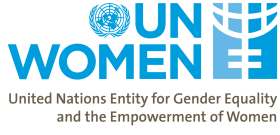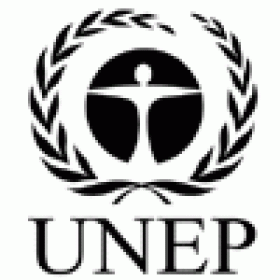
(a) Proportion of total agricultural population with ownership or secure rights over agricultural land, by sex; (b) share of women among owners or rights-bearers of agricultural land, by type of tenure
Last updated on 1 February 2022
This indicator is currently classified as Tier II. The Food and Agriculture Organization of the United Nations (FAO) is the main Custodian agency. UN Women, the United Nations Statistics Division, the World Bank, United Nations Environment Programme (UNEP), and UN-Habitat are partner agencies.
Unit of measure: Proportion of total agricultural population with ownership or secure tenure rights over agricultural land, by sex; share of women among owners or rights-bearers of agricultural land, by type of tenure
Why is this indicator important?
The empowerment of women and girls and the realization of gender equality are pivotal in achieving sustainable development, peace, food security, and other benefits for communities and societies at large. For rural women in particular, rights and access to land are needed to secure food and income for families, and to make women's voices count in community decision-making.
SDG indicator 5.a.1 monitors ownership and rights over agricultural land and is useful in profiling gender differences in agricultural land ownership and control in the sense of being able to sell or bequeath land, for example. As such, it allows to measure gender inequalities in agricultural land ownership and control. An increase in the percentage of women who own and/or control agricultural land indicates that progress is made towards achieving equal rights to land among men and women.
How is the indicator measured and monitored?
According to the metadata document, data collection draws on agricultural surveys and censuses or national household surveys. The indicator uses the agricultural population as a denominator with emphasis on the adult population living in households that have practiced agriculture over the last 12 months. This allows to capture agricultural households even if interviewed off-season. As of late 2021, ten countries have reported their official data on indicator 5.a.1.
In collaboration with UN-Habitat and the World Bank, FAO developed a joint methodology for the indicators 1.4.2 and 5.a.1 to facilitate efficient and cross-country comparable data collection. More information and additional data relating to indicator 5.a.1 such as the distribution of agricultural holders (by sex), distribution of agricultural land area owned (by sex), distribution of agricultural land value owned (by sex) is disseminated through FAO’s Gender and Land Rights Database. Disaggregated data by tenure type shall receive more attention in future reporting.
By Anne Hennings, peer-reviewed by Everlyne Nairesiae, GLII Coordinator at the Global Land Indicators Initiative (GLII) at GLTN, Un-Habitat and Clinton Omusula, Land Data and Knowledge Management Specialist at the Global Land Indicators Initiative (GLII) at GLTN, UN-Habitat and by FAO.
Official indicator data
The two sub-indicators measure how prevalent ownership or secure rights over agricultural land are in the reference population as well as the share of women among owners or rights-bearers. * Select "year" below to see the most recent data for more countries. ** To refresh the map with other official data, use the "Select an indicator" field. Type in the other indicators titles, as given in the table below.
Other related indicators on Land Portal
In addition to the official indicator data, the following indicators provide information concerning women’s tenure security, land rights, and access to land.
| Indicator | Min-Max Number of years |
Countries / Obs | Min / Max Value |
|---|---|---|---|
| Distribution of agricultural land area owned by sex (female - share%) | |||
| Formal recognition of women's right | |||
| Women's property rights are recorded (i) urban (ii) rural | |||
| 2016 - Women's property rights to land are equal to men's (i) in law and (ii) in practice |
Women leaders protecting their land for the next generation
By Chris Hufstader
After an audacious land grab by a foreign company, indigenous women in a remote Cambodian village struggle to regain their farms and sacred sites.
Sol Preng remembers vividly the day in 2012 when bulldozers unexpectedly arrived on her family farm.
“The company came and cleared away our cashew trees right before the harvest,” she says. “I lost four hectares of land and all my cashew trees.”
International Women's Day and the Power of Groups
I recently traveled to the highlands of Peru. Every woman I met there seemed to be doing something with wool: spinning it, or knitting or crocheting skirts, sweaters, and scarves. I was fascinated by the activity, as a sometimes knitter myself, but when I asked to take pictures of them they reacted with confusion at my interest. In their minds, they were not doing anything remarkable or picture worthy, just the daily work they needed to get done.
Learnings on gender from the Congo Basin
Improving how we work for – and with – indigenous and local women in their communities
As a human rights organisation, gender justice is a fundamental principle of our work, and we have long been conscious of, and sought to address, the barriers to effective participation in decision-making by women, as well as the other human rights violations they may face on account of their gender.
Demystifying Data: Data That Empowers
A data story from women in a semiarid region of Brazil
*This story was written by the following women: Ducicleide Maria da Silva, Gigliola Silva Araújo, Ianka Sayonara da Silva, Josefa Ferreira da Silva, Maria do Carmo da Conceição Carvalho, Maria Karoline Policarpo Silva, Manuella Donato, Mariana de Albuquerque Vilarim and Thalya Carla Vieira de Lima and Patricia Maria Chaves . It was translated by Sonia Jay Wright.*
Paginação
Primer mesa del foro “Las mujeres y la tenencia de la tierra en México”
Primer mesa del foro “Las mujeres y la tenencia de la tierra en México”, convocado por la presidenta de la Comisión de Reforma Agraria, senadora Luisa María Calderón Hinojosa.
Cambodia's Women in Land Conflict
ABSTRACTED FROM EXECUTIVE SUMMARY: In the last decade it has become widely accepted that insecurity of land tenure has a unique impact on women, particularly in the global South where, more often than not, women are the primary caregivers in a household.
SYNTHESIS REPORT – GENDER & COLLECTIVELY HELD LAND
GOOD PRACTICES AND LESSONS LEARNED FROM SIX GLOBAL CASE STUDIES
Many studies have shown the benefits to women of secure rights to land: when their rights are secure, their status in the community and within the household can increase, their income can increase, and t
Strengthening Women’s Voices in the Context of Agricultural Investments
Gender and Land Statistics
Secure tenure rights and control over land for women and men farmers are key to boosting smallholder productivity, rural development and food security. However, in many parts of the world, men and women have inadequate access to secure property rights over land.
Paginação
![]()

Undertake reforms to give women equal rights to economic resources, as well as access to ownership and control over land and other forms of property, financial services, inheritance and natural resources, in accordance with national laws
Indicator details
The indicator is conceptually clear, has an internationally established methodology and standards are available, but data is not regularly produced by countries.
Key dates:













